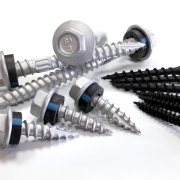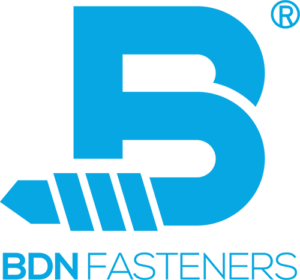Tag Archive for: FAQ
There will come a time when you will encounter a seemingly impossible task, a piece of steel so thick and heavy duty that even your already awesome BDN No.3 point TEK screws in the toolkit cannot handle. There will come a time when you the piece of steel in front of you may be tagged as “mild steel”, but in fact is composed of complex, unevenly distributed alloys, which creates a big challenge for regular self-drilling tips, and almost impenetrable.
One of the most important job a self-drilling screw has to muster, is clearing out excess material, or swarf, while drilling. Having a hardened drilling point and sharp cutting blades only helps with the initial drill and drive, but without a flute long enough and designed correctly to bring out the excess during the spiraling action, iron shavings left in the hole are heated easily from all the spinning, causing the drill to burn out. Once this happens, there is little to no chance of penetration with the screw, and you’ll have to start all over again.
A lot of big brand names are marketing their screws as either self- as TEK screws for thick steel, heavy duty self-drilling metal screws, or self-drilling screws for thick steel, capable of drilling through 12.5mm steel and above, though not many can perform as advertised.
Not for BDN METAL-Tite™ Heavy Section Fasteners. Ours perform flawlessly, without fail.
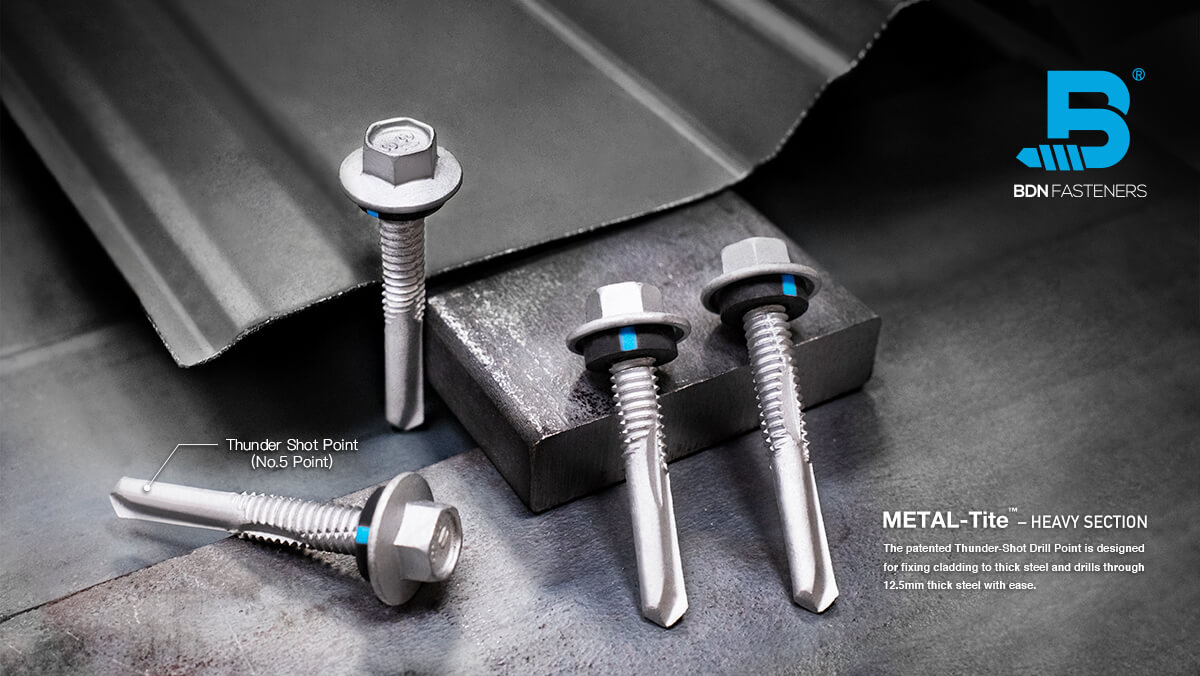
BDN METAL-Tite™ heavy section, penetrates 12.5mm thick steel with ease. The patented Thunder-Shot drill point prevents wandering during the initial drill drive, clears out swarf swiftly and efficiently. The whole screw is coated with BN3 silver coating, which consists of multiple layers of specially formulated, corrosion resistant chemicals, and can easily withstand 1000hrs of salt spray test (ASTM B117), and 7 Kesternich cycles (DIN50018 2.0 SFW).
BDN METAL-Tite™ heavy section screws are also offered in a special 16mm thick steel penetration version. Designed to not only drill through thick, hardened, or complex alloy steel, but can also pass stringent 1mm + 2mm + 9mm, and 2mm + 12mm penetration tests. The most demanding part of these two tests is to withstand the impact force on the drilling tip when it passes through the first and/or second sheet, and hits the final thick hardened layer of steel. Imagine the wear and tear, plus heat buildup of the drilling tip during the first and/or second process. Nevertheless, BDN Heavy duty self-drilling metal screws pass these two stringent tests with flying colors.

Please contact your nearest BDN Fasteners dealer for further information.
In light of recent rumors from certain companies declaring affiliation
with Tai-One Enterprise or BDN Fasteners®, we hereby announce:
- Tai-One Company is the sole authorized agent and distributor of BDN Fasteners® in Thailand and in no way affiliated with other brands and products.
- BDN Fasteners® is a trademarked brand in both Taiwan and Thailand.
- All of the BDN Fasteners® branded products sold by Tai-One Enterprise are manufactured, packed, quality checked, and imported directly from our factory in Taiwan. BDN Fasteners® Taiwan holds all of the patents, intellectual property rights and export records to be provided upon request should the need arise.
- All BDN Fasteners® goods imported by Tai-One Enterprise are legally compliant with the Thailand import rules and regulations; while all sales and services are VAT invoiced and provided to customers.
We thank you for the trust and support of Tai-One Enterprise and BDN Fasteners®. Kindly call us for more information and verification should you hear any rumors that differ from this announcement.
Tai-One Enterprise & BDN Fasteners® hereby declare the above information are true and correct.
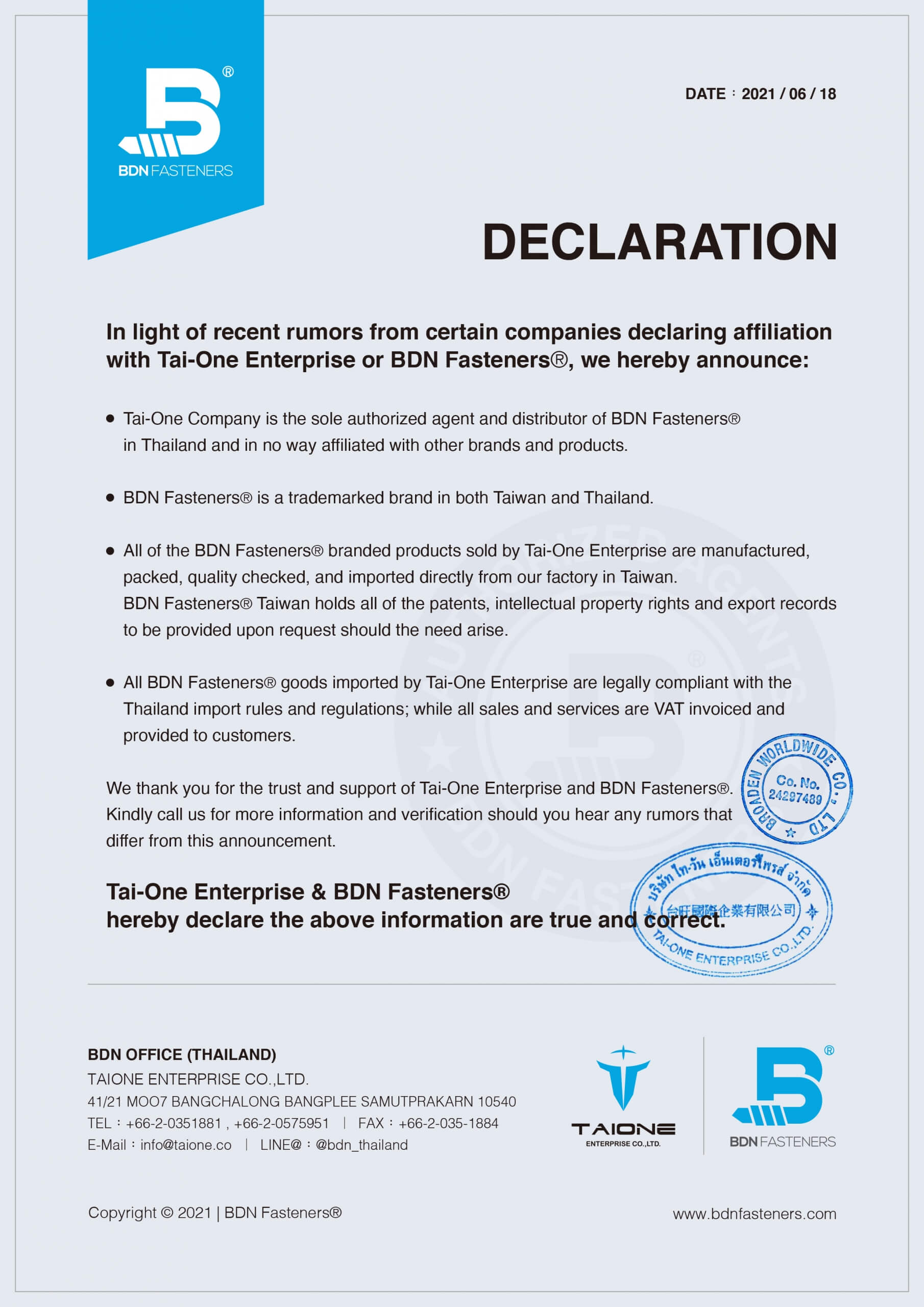
Internal roof insulation
Thermal insulation, which is required mainly for homes in order to slow down the flowing in or out of heat, is often added to walls, roof, ceilings, or floors. As heat primarily escapes through conduction or physical contact with the colder temperature outside, construction and insulation of walls and roofs are crucial to keeping heat inside.
For buildings that were built with poor roof or wall insulation, remodeling could become a big burden, which usually involves taking off of the original roofing panels, and purchasing new insulation panels.
Steel sandwich panels are among the most commonly used material for building either industrial, commercial, agricultural, or public domains. Sandwich panels can often be tailored to suit various thermal, acoustic or strength requirements by combing layers of different materials in different thicknesses to achieve the desired effect.

As mentioned in our other article: Step by step tutorial on choosing the correct screw type for roofing applications, it is important to understand and choose the correct screw type of the job. BDN Fasteners offer a complete fastening solution which consists of various screw types for your insulated roofs or walls.
METAL-Tite™ Self-Drilling Screws

BDN Metal-Tite Series sandwich panel screws are made to match various sandwich panel thicknesses; with additional features such as an enlarged hex washer flange to fully cover fully compressed EPDM washers and holes, anti-static EPDM washer to prevent galvanic corrosion, double thread design to increase pullout values, Scratshank to clear excess swarf, and Ruspert anti-corrosive coating for extended lifespan.

BDN Metal-Tite Stitching Fasteners can be used to fix panel to panel side lap, or panel to end lap of light gauge, lightweight steel.
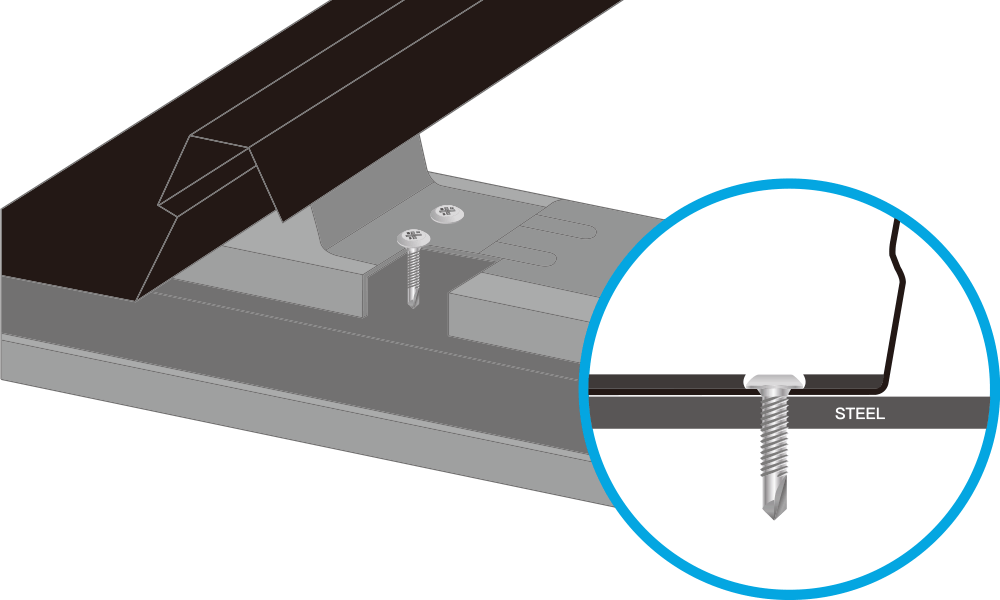

BDN Metal-Tite Wafer Head or Flat Top Concealed Frame Fixing Fasteners for low profile fixing with no visible protrusions which might create interference, creating an aesthetically pleasing flat surface upon installation.

BDN Metal-Tite Truss to Plate connecting fasteners for fixing steel trusses to steel plates or beams which is pretty common on frame and structures for internal roof insulation or wall panels.
Learn more about BDN Fasteners >>
10 Different Self-Tapping screw head types | BDN Fasteners
How to use self tapping screws for metal?
Rust, the most feared phenomenon and common enemy among builders and owners alike of any building structure, especially ones that are exposed to the elements. For coastal areas, salt haze formed by evaporation of sea spray corrodes and weakens the structure and also roofing screws. In other areas, corrosion may result from acids spread from industry, vapors from agricultural fertilizers or pesticides, fumes from petrochemical sites, UV ray exposure, and humidity. Metal roof screws rusting will have negative impact on buildings regardless of its root cause of failure.

The cause and effect of metal roof screws rusting.
When it comes to metal roofing and wall cladding, manufacturers have put in lots of effort in the development of coatings and layering technologies to enhance weathering resistance; some even have up to five layers of coatings, each with its own unique properties to cope with severe environment, and warranted up to 50 years.
A very important aspect that the majority fail to realize is, these roofing sheets will live up to its projected life expectancy only if the screws and accessories used alongside them performs equally well. The overall lifespan of the metal roof covered area depends on whether there are metal roof screws rusting or not. One of the main reasons oftentimes we see really high-tech metal roofing sheets that are fixed with screws that offer little to no weathering resistance at all, which totally negates the purpose of using these high corrosion-resistant sheets in the first place. A responsible roofing sheet salesperson should specify the type of screw with matching weathering resistance when making sales.
The majority of metal roofs are fixed with exposed fasteners, as opposed to concealed fixings roof where the fasteners are covered against the elements; being exposed means that fixings are the first thing that comes into sight when looking over rooftop, and any sign of rust awfully visible, though it is generally overlooked and often not dealt with until it’s too late and damage has spread to the roof sheet or even inside the building.
How to prevent building damage caused by metal roof screws rusting?
We suggest biennial inspections in coastal, high humidity, or highly polluted industrial areas, and quinquennial inspections in rural, less polluted areas. Have an experienced builder or technician examine the site in question alongside you, as they should provide expert opinion on whether the rust is an immediate threat that requires replacement of the fasteners asap, or could be held off until the next season or renovation.
Since having metal roof screws rusting or not is detrimental to the safety and life expectancy of the building, if upon inspection, the roofing screws are really rusty, and the threat of damage imminent requiring immediate action; the following steps will guide you to choosing the correct corrosion resistant screw category for the job.
- Understand your environment. For example, areas close to the coast will be at high risk to corrosion due to high salt content in the atmosphere compared to the inland, and therefore would require high weathering resistant fasteners on structures.
- There are multiple choices on the market when it comes to corrosion resistant coatings, and products are normally priced according its service life and warranty terms and conditions.
- Since it is impossible to tell from the naked eye how effective the coatings really are, a reputable company will provide accredited 3rd party test lab reports as proof of compliance.
For more information on metal roof screws rusting, corrosion resistance and service life in relation to the environment the fasteners are used in, kindly contact your local BDN Fasteners distributor or salesperson, or simply click on Choosing the correct screws for metal roofing sheets installation to understand the scope of warranty for our products and the environment category classification they are base upon. Choose the correct screws to prevent the building impact from metal roof screws rusting.
Learn more about roofing screws >>
Internal Roof Insulation Installation with Self-Drilling Fasteners
How to use self tapping screws for metal?
5 types of metal roofing: type, structure, environment. It is important to understand before selecting screws for your type of metal roof installation.
The majority of BDN self-drilling screws are designed for either metal roofing or wall cladding installations, with the exception of proprietary designs for specific purposes such as PolyXpand™ for plastic skylight fixings, or TRUSS-Tite™ for joining truss components on steel framing.
Common issues we see on high quality, expensive metal roofing sheets fixings are:
- Incorrect selection of screws, with issues ranging from length, drilling capacity, thread type, gasket, and more.
- Poor quality screws which are unfit for the location and environment installed in.
- Improper screws for metal roof installation – the majority of issues stem from insufficient knowledge of the product, not following installation guides and instructions, and most of all, carelessness. Don’t forget that choosing the correct tool for the job also plays an important part in proper installation.

How to choose screws for metal roof installation properly?
Before any installation, understand the type of structure, material, and environment we are dealing with. Since we are talking about screws for metal roof installation, determining the type of metal roof will be first priority.
- Is it a single sheet insulated panel?
- Are there any skylight panels installed in between sheets, and if so, what type of material are the skylights?
- What is the thickness of the sheet, and how thick is the insulated portion underneath?
- Color of the sheet and should the screws have to come with matching head colors?
Understanding the type of metal roofing and structure type
Upon determining the type of sheet used, we then have to understand the type of structure it is affixed to.
- Are the purlins steel or timber?
- Thickness of the steel purlins?
- Are there any trusses involved?
Introduction to the 5 environmental classifications
We should then determine the kind of environment the building structure is built on. Here at BDN Fasteners, we have categorized the kind of environments to the following based on its characteristics. Scope of warranty for our products are also based on the category the environment is classified to.
Dry, Rural Areas –
- Areas remote from the coast and sources of pollution; as well as all of the areas listed below.
Mild Urban or Rural Areas –
- Areas with little to no chemical pollution, including but not limited to natural chemicals such as ammonia from livestock or carbon monoxide from log-fire.
- Areas far from the coast with no impact from salt water spray.
- Areas at least 2 kilometers away from any type of industry, light or heavy.
Light Industrial or Urban Areas –
- Light industrial zones, light manufacturing, warehousing, distribution, or limited light intensity activity areas.
- Built up areas constituted of high human population and infrastructures.
- Areas at least 1~2 kilometers away from light industrial or urban areas.
Small Industrial Zones –
- Areas located in or adjacent to small industrial zones.
Coastal Areas –
- Areas located approximately 2 kilometers from the coast.
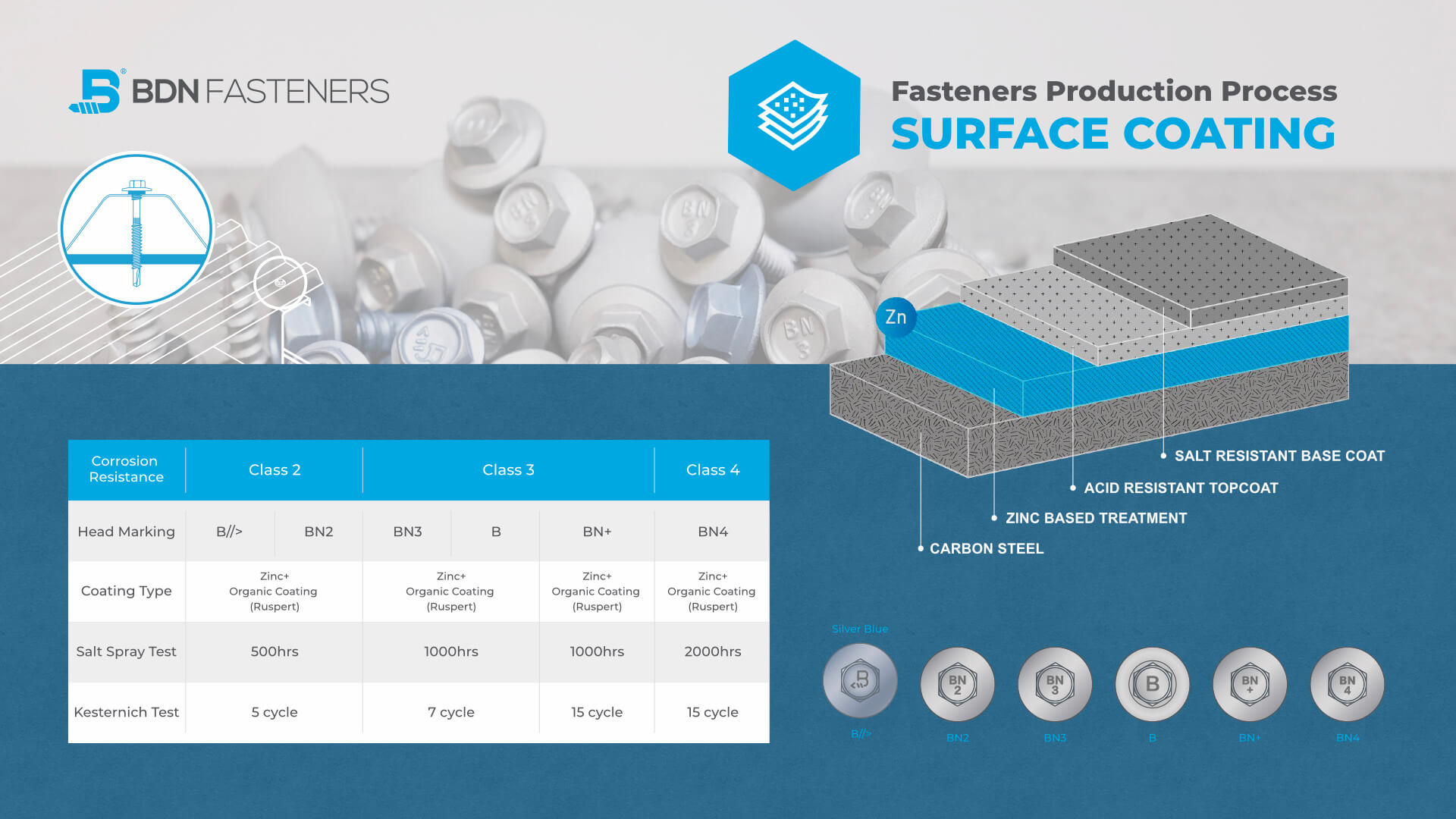
Lastly, choosing the correct screws for metal roof installation is only half the job done, and it all comes down to how the installer completes the final touch, as an improperly installed screw is worse than none installed at all.
Above are basic guidelines for the novice builder or contractor to follow when making the correct fastener selection. Since building sites differ from one another, additional factors may be required to take into consideration; it is best to contact an experienced salesperson or technician for on-site checks before making final decisions.
Learn more about BDN Fasteners >>
Internal Roof Insulation Installation with Self-Drilling Fasteners
How to use self tapping screws for metal?
Metal roof leaks around screws:
There are lots of contributing factors when it comes to roofing leaks. A properly driven screw will have achieved the following steps and as a result, provide the perfect weather seal.
Driven straight, perpendicular to the material it is fastened on to.
Adequate, clean penetration with no excess swarf protruding or overhanging from the drilled hole.
Driven until the gasket is compressed firmly against the surface.
Below is a list of common causes of metal roof leaks.
1. Choosing an incorrect screw:
Metal roofing screws are usually designed for fixing thin roofing sheets onto steel purlins, trusses or timber underneath. Depending on the thickness of steel underneath, correct drilling point sizes must be chosen in order to penetrate. Most suppliers will provide a list with corresponding drilling capacities to their screws. Read through the list carefully and don’t hesitate to ask questions.
The length of the screw is also important. The length of screw required can be calculated by adding the depth of the roofing sheet corrugation, plus the thickness of the purlin/truss underneath plus at least 2 to 3 full thread lengths to ensure proper fastening. Don’t forget that the thickness of the bonded EPDM washer or Domed BAZ washer should also be taken into consideration.
Thread type should be considered. A rule of thumb is, coarse threads for thinner sheets (<4.5mm), and fine threads for thicker sheets (>4.5mm). This will ensure the fixing to have adequate pullout values against pressure from high winds or snow.
2. Over–driven screws:
The rubber gasket should seat firmly but not over compressed against the surface. The rule of thumb is, the gasket should not be bulging at the sides of the washer flange, or even to the point of being squished. Workers should take extra care while making an attempt to ensure a tight seal between the metal roofing and the screw head because an over-torqued washer loses its elasticity, breaks down prematurely, and oftentimes disintegrate due to over-exposure to the elements.
3. Under-driven screws:
This is an easy one. An under-driven screw does not provide sufficient pressure to the washer to create a firm seal against the surface. This may happen due to incorrect drilling tip capacity selection and therefore could not adequately penetrate the metal substrate underneath to reach the desired depth.
4. Misaligned or skewed drilling:
A misaligned or crooked driven screw will result in the rubber washers not seating properly against the surface, which means insufficient seal of the hole, or one side over compressed, resulting in premature damage to the gasket. Another sometimes overlooked risk is the skewed side of the steel washer or hex washer flange digging in, deforming or sometimes even cracking the surface, which also contributes to leakage.

Some screws have extra features built in to enhance performance; oftentimes poor choice of fixings become the weakest link in a seemingly strong building structure. BDN Metal-Tite® series roofing screws come with an enlarged hex washer flange, anti-static EPDM washer, double thread, Scratshank, and Ruspert anti-corrosive coating.
- The large washer flange is designed so that the EPDM washer will remain fully covered after compressed.
- Anti-static EPDM washers prevent galvanic corrosion.
- The larger diameter upper thread close to the hex washer flange increases pullout values on thin metal sheets.
- Scratshank clears out excess swarf, smooths out the drilled hole, and prevents damages to the EPDM.
- Ruspert anti-corrosive coating fully protects the screw from weathering and extends the lifespan of the screw and the sheets it is affixed to.
Learn more about BDN Fasteners >>
Internal Roof Insulation Installation with Self-Drilling Fasteners
How to use self tapping screws for metal?
Self-Tapping and Self-Drilling screws are the bread and butter of our business and the most commonly known and used for fastening two different kinds of material, be it steel, timber, or plastic, and the list goes on.
BDN Fasteners offers TIMBER-Tite™ and TRUSS-Tite™ self-tapping screws.
TIMBER-Tite™ screws are designed for fixing metal roofing sheets or wall claddings to timber, whereas TRUSS-Tite™ is designed to fix steel roofs and floor trusses. Basically, all self-drilling and self-tapping screws are able to tap threads, where the main difference is that self-tapping screws normally come with either a blunt head, sharp point, or a reduced drill point.
Blunt headed screws such as the TRUSS-Tite™ is designed for truss components assembly, fixing into steel. These types of steel normally come with pre-punched or pre-drilled holes, and the blunt, slightly tapered leading threads makes it easier to fix the sheets down.

Our sharp pointed TIMBER-Tite™ are designed for fixing roof sheeting to timber. The longer versions such as the T17CG1265C3N or T17CG1250C3N are designed for crest fixing and shorter versions such as the T17H1020C3N are designed for valley fixing. People ask why screws should be fixed down on the crest but not the valley. The main reason being water runs by gravity and flows to the lowest point, and if fixed on the valleys on rooftops, might increase the risk of water pooling around the screws and with time, cause rust.



Shorter self-tapping screws which come with what we call a “reduced” drilling point, provides the same function as a sharp drilling point, but drills faster through thin metal sheeting, and is much more effective at clearing off excess swarf, as it is difficult if impossible to add flutes on smaller sharp pointed screws to due manufacturing limitations.

For roofing sheet fixing screws, always check if they come with a knurled, fluted, or slotted shank, and if the upper threads are larger in diameter compared to the lower threads. You might notice that the majority of BDN self-drilling and self tapping screws for metal are equipped with both. The larger diameter upper threads provide good pullout strength for the whole setup under high winds and the slotted Scratshank design clears out excess swarf which might damage EPDM washers if leftover, which could result in leaks.
Learn more about BDN Fasteners >>
Internal Roof Insulation Installation with Self-Drilling Fasteners
How to use self tapping screws for metal?

Self-Tapping Screw Head Types
A self-tapping screw has the ability to tap threads as it is driven into the material. It is often used only to describe a specific type of thread-cutting screw intended to produce threads in various types of materials, with sheet metal and wood being the most common.
BDN Fasteners offers a range of self-tapping screws. The screws come with either a self-drilling tip for metal or pointed tip for timber. After the tip creates a pilot hole, the thread then taps into the metal or wood the screw is affixed to.
Regarding head types, screws are available in many different head types. Some head types are very application-specific, while others are more versatile for general applications. Head types are usually manufactured according to set standards according to the region used, though some might tweak or even tailer the design here and there in order to meet special requirements.
BDN Fasteners are manufactured according to the tried-and-true Australian AS standards, offering a good balance between cost and performance, and backed with an industry-leading warranty.
10 Screw Head Types
|
HEAD STYLE |
DESCRIPTION |
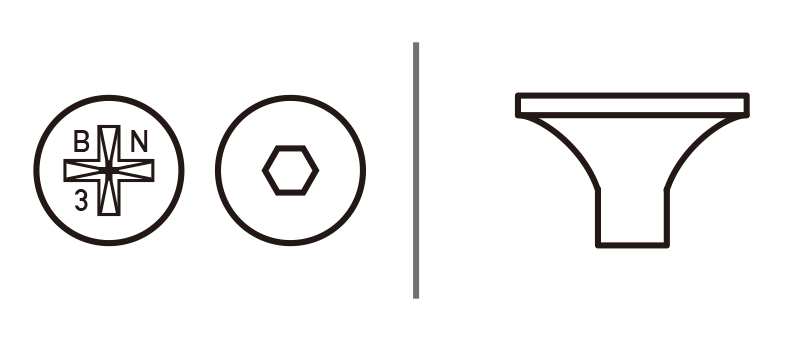 |
BUGLE HEADIn the smaller gauges up to 8–gauge, this head style is generally used for plasterboard as it does not damage the face of the sheet. The 14-gauge screws with this head style are often used for landscaping and fixing heavy duty decking boards. |
 |
BUTTON HEADScrews with this head type are used for stitching thin steel together and the large head provides a good clamping force on the materials being fixed. |
 |
COUNTERSUNK (CSK) HEAD WITH RIBS (NIBS)This head style is used in a broad range of timber applications where a flush finish is required for the fixing, and the ribs countersink the screw into the timber. It also comes in a variety of drive types depending on the application. |
 |
COUNTERSUNK (CSK) HEAD WITHOUT RIBS (NIBS)This head style is generally used with screws that are fixing steel, where a countersunk recess has been pre-drilled. |
 |
FLAT HEAD / FLUSH HEADThis head style is a low-profile type typically used where cladding is to be fixed over the top, including where plasterboard is fixed to a steel house frame. It is imperative that the head sits absolutely flat. |
 |
HEX FLANGE HEADThis head style is used for a broad range of applications including roofing, cladding and timber fabrication, and comes in a range of gauges for heavier duty applications. |
 |
PAN HEADThis head style is used with general purpose fasteners for fixing thin steel to steel or timber substrate. |
 |
SELF EMBEDDING HEADThis head style is mainly used for fixing 3-6mm thick cladding such as Cement Sheet or Blue Board, and the ribs under the head countersink the screw into the material for a flush finish. |
 |
TRIM HEADThis head style is normally used for decking or picket applications where a smaller head is required to avoid splitting the timber when it is installed. |
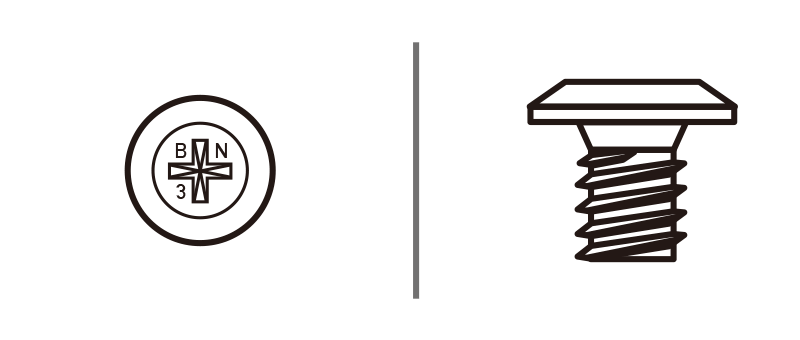 |
WAFER HEADThis head style is mainly used for fixing a variety of generally lighter materials to a steel or timber substrate. |
Learn more about roofing screws >>
Internal Roof Insulation Installation with Self-Drilling Fasteners
How to use self tapping screws for metal?
BDN Fasteners
BDN Fasteners (Broaden Worldwide Co., Ltd) is an ISO-9001 Certified Quality Supplier-Manufacturer of Australian Standard AS3566 self-drilling and self-tapping screws in various coatings for steel to steel and steel to timber applications. Our headquarters are in Taiwan and we operate sales and marketing offices in India and Thailand.

